You need to evaluate SEO performance metrics in order to better understand how well your site is doing.
They always provide measures known as key performance indicators KPIs’ that enable identifying growth.
While executing the SEO strategies, these parameters guarantee enhancement of the overall performance.
To achieve the goal, an SEO campaign is a continuous process of monitoring and reviewing. In SEO, data is one of the most valuable resources to effect change for growth.
In the following part of this guide, the most important SEO metrics will be discusses. We will also describe why each of these metrics is important when it comes to optimization.
In this article the reader will be enlighten with techniques for evaluating the performance of participants. Want to jump head first into the world of SEO metric?
Note*
“ Here are some points you should consider ”
1. ORGANIC TRAFFIC
Referral traffic quantifies the visitors that are from other websites. This metric alerts you to the effectiveness of optimization strategies that you adopt.
Getting high scores in organic traffic means that the site has the best of ranks. It means that users have the ability to find their content through search strings.
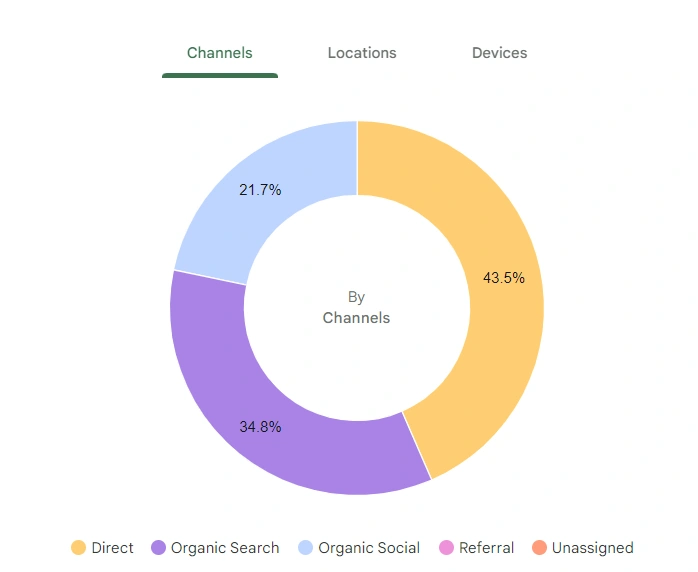
Your current SEO campaign might be work-less if you do not have any organic traffic coming to your website.
To increase organic traffic, one needs to have specific content and enhance it. This is as far as your visibility and your coverage or exposure, depending on how you want to look at it.
Organic traffic measurement is done by the Google Analytics tool. Analyze the tendencies of organic traffic changes on a regular basis.
WHY ORGANIC TRAFFIC MATTERS?
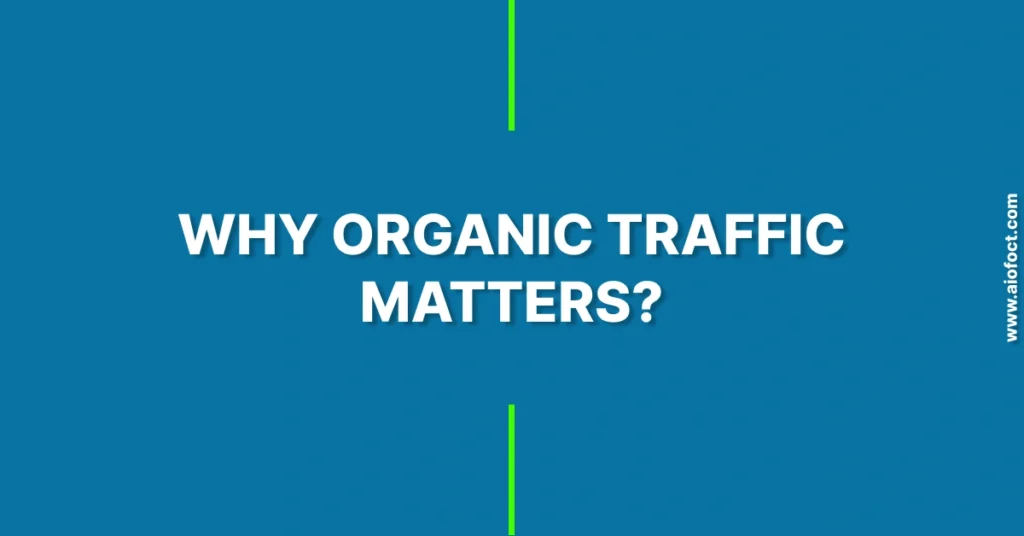
Organic traffic is crucial because any traffic that is not paid is always welcome as well as that which is consistent.
The more the websites are ranked high the more traffic they attract.
Nevertheless, converting each of the visiting audiences can occur to supply quality content in order to draw and maintain their attention.
Also, the chances of converting the traffic increase with more traffic in the website or blog. Organic traffic can be sustaining for a longer period of time whereas paid ads cannot be done so.
In ranking, search engines always champion relevant content if they are well optimized. Hence, organic traffic growth can only be achieving by quality and SEO optimized content.
Organic traffic continues to grow when a correct Search Engine Optimization technique is can be implement.
2. KEYWORD RANKINGS
Keyword rankings tell how effective your content is. It points to where your site stands in the search results if your site is ranked.
Check the top queries:
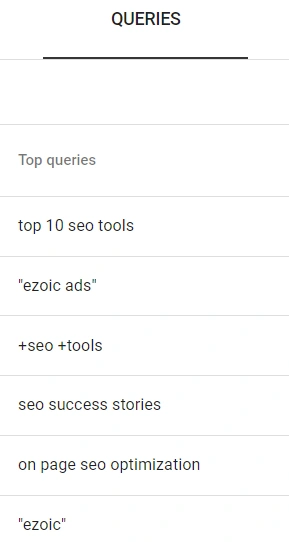
Keyword rankings up the visibility of your site such that the higher the ranking, the better positioned you are.
That way, you can track these rankings, which are a good way of tweaking your SEO process. Tracking certain keywords make the assessment of the effectiveness of the optimisation exercise easier.
Search engine optimization tools such as Google Search Console can show the position of the website with regards to certain keywords.
It must always be a drive to increase the keyword rankings. If you’re in the SEO strategy, you would want to rank for the most critical keywords in your niche.
IMPROVING KEYWORD RANKINGS
So here are some tips on how you can elevate your keyword rankings: Rule number one, stick with quality content.
It cannot be overemphasizing how critical it is for your content to match the user’s search intent, 100%. Primary and secondary keywords are uses and optimal use of both of them should always be consider.
However, it is advisable to keep your website technically sound by using the best development technologies.
This includes features such as, the speed of the page’s, its responsiveness on mobile devices, and protection.

Another factor is structure data markup, and internal linking is consider the important as well.
Make sure to always repost new content that can be relevant to the latest trends as much as possible.
Such a process works to manage the steady ranking of your content as your website draws increased traffic.
3. CLICK-THROUGH RATE (CTR)
Click-through rate, CTR stands for click through rate is percentage. It defines how many times people click the links you are promoting.
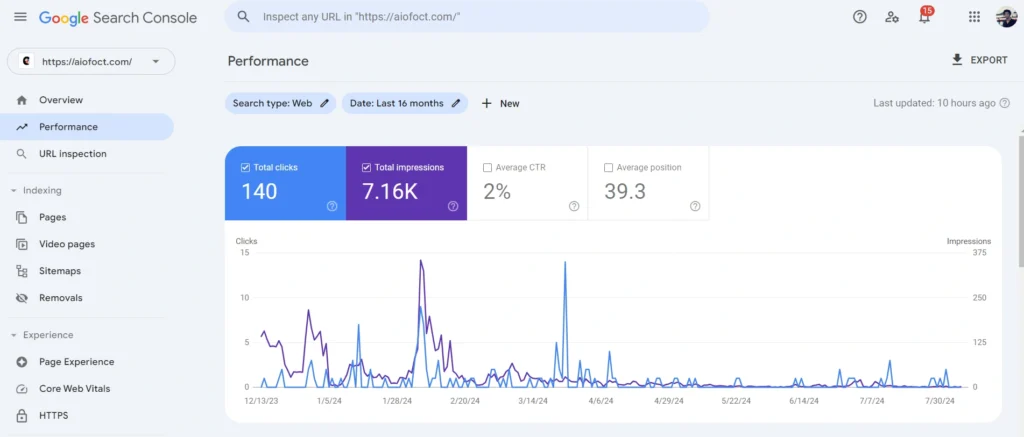
CTR determines how appealing and clickable your links are. In overall, the use of perfectly optimized titles and meta description can boost CTR by a great extent.
CTRs that way correspond with so much traffic to your site page. If you’re experiencing a low CTR, then you should check your title tags.
Medium attention grabber: Often the articles with engaging and compelling titles receive more click throughs.
It was revealed that meta descriptions should satisfy the expected expectations of users to be effective.
INCREASING CTR FOR BETTER RESULTS
In order to improve your CTR, make sure to write spectacular meta descriptions.
It is critical to make these snippets summarize your content concisely and without adding more information than is available.
Use action words and make it sound like a deadline as well. Title tags should make the person browsing the website curious or give value at the first glance.
One of the things that can be tried through A/B testing is the variation of titling options. Besides, structur data can enhance the manner in which the content is more present as well.
It is also for this reason that some featured snippets attract more click-throughs than they potentially deserve.
Continually analyze and adjust CTR for the ultimate target of traffic expansion.
4. BOUNCE RATE
Bounce rate on the other hand is the ability of the users to leave, and it is determined by a percentage.
High bounce rate occurs if the visitors who arrive at your site leave it shortly.

To become popular and get a good rank, one needs to have a low bounce rate so as to tell that users are interested in the content created.
This could mean that the users receive poor experience or that they receive content that is not relevant to them.
Basically Google Analytics is useful in tracking bounce rate and other metrics for a website. A low bounce rate gives better indication and relevance of content to the visitors of the site.
To solve the issue of bounce rate, make sure the experience always leaves a positive tone with users.
Your material has to provide users with the information they need as soon as possible.
REDUCING BOUNCE RATE FOR BETTER ENGAGEMENT
In other words, reducing bounce rate needs both design and content. First, check that your website has a high speed of work on any device.

This not only frustrates the users, who prefer a fast loading website, but also results in high bounce rate.
Secondly, make sure that your content answers the user’s expectation in the most direct way possible.
While using the app, if users cannot get the answers to their questions within the shortest time possible they will move on.
Furthermore, one should divide content with visuals and subheadings. It also makes it easier to read and much more interesting.
Finally, one has to suggest the enhancement of internal linking to the relevant pages. This allows the users to continue scrolling through more of your content.
5. AVERAGE SESSION DURATION
Time spent per session determines how much time the users spend on the website. Longer average of the session implies better user engagement.
This metric will tell you the level of interaction your content is generating and whether it is being well appreciated.
The longer flowtime that the user spends on your site, that is better. It has been proven many times that longer sessions generally tend to result in better conversion rates.
Google Analytics offers this metric under the umbrella of a user behavior report. A low session duration may be an indication.
So that content isn’t as interesting which implies the need to post better content. Duration is vital and needs skills in designing and content so that the time spent will be increased.
BOOSTING AVERAGE SESSION DURATION
In order to raise the overall time spent in session, increase the quality of the content by making it more readable and easy to navigate.

Using images, charts or graphs, videos, etc., will help the readers avoid monotony while helping the writer present information more efficiently.
It’s also a bad idea to have very, very long paragraphs as users tend to get lost when they are reading them.
Secondly, develop content that satisfactorily addresses any query that a user may have. Internal links help involve the users with some more related content.
It should therefore be possible to have fast and fluent work on every device, especially on the portable ones.
It should be therefore agreed that this metric should be closely monitored in order to detect any problem.
6. PAGES PER SESSION
The page views section depicts how many pages are visited in the sites by the users. Engagement is an indicator of the level of interaction.
So that people have with your site and that reflects how interesting and pertinent to them your site is.
High pages per session indicate that your content is interesting and relevant to people’s needs. Thus, worth spending many minutes on.
So, it means they are going to deeper pages, meaning there are higher possibilities of making the conversions.
It is always a good idea to have a larger number of pages visited per session, so a low value for this indicator implies that work needs to be done.
This means you wish to have users able to access more than one page in your website. This too is important for success just like other user engagement indicators.
INCREASING PAGES PER SESSION
To increase the pages per session one has to focus on internal linking. Internal links are the links that lead the users to the related sites that you have in your website.
Also, make certain the structure and layout of your site are consistent and user friendly. Make sure there is a strong CTA on each page and at the bottom of the latter.
This leads the users to look for more content or maybe services that are of interest to them. Providing recommendations of related content at the conclusion of the articles also plays a very big role.
In all your designs for information exploration, make sure it is positive and has no glitches.
7. CONVERSION RATE
Conversion rate helps in estimating the level of engagement of the visitors in taking required actions.
In subscription based models, ‘Sign up’ is a conversion while in purchase based models ‘Purchase’ is a conversion.
Converting leads should be easy and anyone with a high conversion rate must be confident of their SEO strategy.
If users are present but do not go ahead to perform the necessary action then it can be a problem.
Pricing schemes, the design of the Smart-city, or people’s trust could be an issue.
Google Analytics provides an option which allows you to set up conversion goals for measuring its effectiveness.
It is always the best practice for threading more on both variables of SEO and conversion is different activities.
OPTIMIZING FOR HIGHER CONVERSION RATES
In order to maximize the conversion rates, first of all, go through the users’ paths. Make sure that every action taken directs the consumer’s attention towards the call for action.
If required, make sure that you address all the pain points present in your design or the offer that you are developing.
A/B testing is a crucial step if a better performance of the landing page is to be achieved.
When using CTAs, make sure you use persuasive CTAs in order to prompt the users to act appropriately.
However, instead of tuning people against their desires. It is recommended to focus on building trust with clear value propositions and reviews.
In particular, do all you can to minimize friction in the buying situation.
8. BACKLINK PROFILE
The backlink is a list of external links pointing back to your site. Backlinks are considered as one of the key off-page SEO techniques.
Note*
“ Currently we have less backlinks. Because, just a few months ago, we started our blogging journey. Please don’t get misunderstood ”

When it comes to backlinks, it is of paramount importance to note that the quality of the backlinks determines your site’s rankings.
Other considerations include the quality and relevance of the backlinks: the better and more relevant the links the higher the website’s authority and trustworthiness.
But, it can be detrimental to your Site’s search engine rating and ranking in the long run if weak and unsustainable links are used.
To find the backlinks of a site, one has to use Ahrefs or Moz. You require numbers of backlinks for growth but they must be of good quality and balanced.
BUILDING A STRONG BACKLINK PROFILE
Having a good back-link profile is one of the toughest things to achieve in the world of SEO. Of the two, give emphasis on acquiring links from the sites of high relevance only.
This is a fact as the most common practices include guest posting, influencer targeting, and forming partnerships.
Also, a list of activities to be excluded includes the buying of backlinks that are of low quality known as black hat techniques.
A backlink profile requires constant check and you need to remove all links that are spammy. If you find short links to malicious sites they are deleting by using the disavow tool.
Note*
“ Back links must be healthy if the SEO strategy is to have a long-term impact on the operation of a site. “
9. CRAWL ERRORS
Any time that a crawler is unable to access pages of a site, crawl errors come up. These errors will disallow your site to be indexed.
Crawl errors have a dowaffect on your SEO. So the higher number of crawl errors, the worse the situation is.
For the tracking of these errors, Google Search Console is the most effective tool.
Responding fast to crawl errors means your site stays indexing which helps to avoid your site from being remove from search.
That being said, if you don’t address crawl issues, your content won’t rank at all.
The second way is that one should always check the crawl error reports to avoid complications with SEO.
FIXING CRAWL ERRORS
To correct crawl errors, firstly, find out the cause using Search Console. This may be due to server problems such as broken links, blocked pages and so on.
Ensure that any error links are fix or the redirect problem is changing with the right one as soon as possible.
Make sure your robots. Influence txt files are not preventing key web sites from being load. Further, it is also advisable to periodically check the site for possible crawl issues.
Maintenance of error free websites also provide generic and specific improvement in the search engine indexing.
10. PAGE SPEED
Full page load on the other hand enlists the time taken to load the page to its entirety. It’s a very important factor that affects both usability and Google rank.

Sites that load slowly, cause bounce and are ranked lower on the SERPs. Google provides the tools known as PageSpeed Insights to find out the speed related problems.
In simple terms, page speed can be enhanced by the optimal image, the removal of codes and the caching mechanism.
A site that loads fairly quickly is able to make the users happy and also rank high.
OPTIMIZING PAGE SPEED FOR BETTER PERFORMANCE
Thus, to enhance the page speed, begin with reducing the size of big files like images and graphs.
Optimize CSS, JavaScript as well as HTML files for loading. This can be achieving through the enablement of the browser cache and through the use of CDNs with Content Delivery Networks for better access.
It would be wise to consistently check and maintain an eye on the page speed and act on any signs of slowing it down.
Website loading speed affects your ranks in a search engine and users’ tendency to stick to your website.
It’s much better to have a faster site when it comes to total accessibility and usability.
Note*
“ But you are still struggling with the page speed problem, you can leave a comment below. ”
11. MOBILE USABILITY
Mobile usability refers to the degree of effectiveness of a website in use on mobile devices.
As we know Google prefers websites which are friendly with mobile devices and has included mobile friendliness among its ranking signals.

Check your site with this tool here.
If your site is not mobile friendly, then it stands the chance of losing traffic. Among the mobile usability issues are that it is not well designed or it is not easily responding.
One way that can be use to determine these problems is through Google’s Mobile-Friendly Test tool.
This technical guide is to always focus on a smooth and responsive interface for the mobile users.
IMPROVING MOBILE USABILITY
If a site is to be properly utilized on a handled device, then a responsive website design has to be used.
One of the most critical points: your site should be perfectly responsive, i.e., adapted for different screen sizes.
Mobile optimization should be the key for improved site rankings in the search engine.
Also, it should be remember that the touch parts of the screen are optimally/location and have a fast loading order.
Having a mobile friendly version will ultimately increase your SEO ranking. Since more and more people use devices with a shut down, this metric.
12. CORE WEB VITALS
Core Web Vitals are concerned with performance of user experience. These are; Largest Contentful Paint (LCP), First Input Delay (FID ) and Cumulative Layout Shift (CLS).

Google included all these into its metrics as ranking indicators recently. LCP measures the amount of time taken by the entire main content to load completely.
FID quantifies the amount of time it takes for a page to engage with the users after an interaction. For loading, CLS helps to point out the stability of the website in the visual system.
Taken together, these act as surrogates to give an analyst a view as to the state of user experience. Decline in Core Web Vitals affects your positions; thus, it is vital to evaluate them.
Note*
“ Core web vitals: it is a more effective part of your SEO journey. So try to solve it. ”
IMPROVING CORE WEB VITALS
This is because, to optimize the core web vitals, concentration should be made on page load times.
The size of the images should be optimize and unnecessary objects need to be take off from the page.
To maximize the recommended user interactions, make sure server response time is fast for such interactions.
Also, do not allow sudden shifts in layout with high visual stability. Google offers a tool called PageSpeed Insights which presents all information concerning Core Web Vitals.
These are the important metrics to watch and manage so as to improve the rankings.
13. TIME TO FIRST BYTE (TTFB)
Time to First Byte (TTFB) tells you about the server’s response time. It keeps a tab on the time it takes to begin to load a given webpage.
Long response times set back both your optimisation and visitors’ experience. TTFB is the metric that is use to measure the page load and it is apt for the purpose.
GTmetrix and Google PageSpeed are few of the tools, which can be use for a precise measurement of TTFB.
The best thing about TTFB is that the lower it is, the quicker your site is load in front of the users.
REDUCING TIME TO FIRST BYTE
If you want to optimize your TTFB then, to begin with, you need to optimize your web hosting service performance.
Make use of the content delivery network global to make use of the pages faster.
Also, where possible, avoid using too many requests to the server and avoid frequent or long running database queries.
Note*
“ You can switch your current CDN to cloudflare CDN. It may handle database queries at the nearest search stations in your current area. ”
As with most commonly accessed media, there is always a need to adjust the cache parameters with an aim of minimizing the time taken to load the server and the loads exerted on the machine.
TTFB score can be check on a regular basis with or without the help of performance optimization tools.
By optimizing TTFB, you help the users as well as enhance your SEO positions in the process.
14. EXIT RATE
Exit rate defines the proportion of the visitors that left the site. While bounce rate is establishing to determine where the users leave from, exit rate centers on where they leave particularly.
High exit rate in a certain page may depict some problems. This kind of metric assists in defining problem areas to your content or your navigation.
By looking at the exit rate you can also see more about increasing the chances of engaging users.
If users churn quickly, the content must be tweak in order to retain them.
REDUCING EXIT RATE
In general, therefore, reducing the exit rate is grab by trying to improve the content as well as content flow.
Use your content in a way that points users to the next conversion or engagement step. To keep the users interested, one should use eye-popping CTAs, internal links, and relevant offers.
Also, check the high exit pages’ design and structure and see something improper made. It implies that small reductions with regard to the exit rate are possible and would bring about a huge difference.
This type of page must be review and optimize for performance on a regular basis as such pages are indicative of high bounce rates.
15. DWELL TIME
Link dwell time is the time spent by the visitor after actually clicking on the link. A longer dwell time will suggest that the users, who drove from the source, are willing to spend their time consuming the content you offer.
It is actually a rank factor that affects users indirectly. It is therefore important that the time spent on your site be higher than the time spent on any other site in the same category.
It is also using with relevance to the variations on SEO timelines. This means that for you to achieve a goal of high dwell time, your content has to be elaborate and interesting.
INCREASING DWELL TIME
So to extend the dwell time, produce content that has the user’s interest and is rich and engaging.
If you have a long text, they should be brok with visuals, bullet points, and subheadings. This makes it easier for the eye to follow as well as keeps the visitors engaged and hence enhances their time on the site.
Also, you have to optimize your website for efficiency issues such as fast loading of pages and its ability to adapt to different devices.
You should also try and take users through other relevant content using internal links. One must inspect pages with low frequency of dwell time for possible optimisation.
16. REFERRAL TRAFFIC
Referral hits are those traffic acquire from sources other than the search engines. Some of the examples are the users who arrive through the links from other web pages.
This metric could be use to determine the level of traffic that most of the external platforms attract.
Referral traffic also benefits your back link as well as your web site authority. Tools like Google Analytics assist in the identification and the performance of referral traffic.
More efforts should be directing towards partner relations in order to gain more backlinks and increased referral traffic from those sites.
INCREASING REFERRAL TRAFFIC
To boost up the number of visitor traffic by referral, it is important to build good relationships with other websites and webpages.
There are many strategies which are useful such as guest blogging, partnerships, and influencers.
Stress on the number of backlinks received from other websites or the number of websites linking to the website.
It is more important and should consider the number of high traffic and relevant websites linking to the site.
Promoting content marketing on multiple platforms in order to share it. Check referral traffic and its sources frequently, as well as improve the techniques of reaching out to them.
It is evident that proper referral traffic is good for both SEO and brand recognition.
17. DOMAIN AUTHORITY (DA)
Domain authority is the score that reflects the overall health of your domain and the level of trust to it. This has a scale from 1 to 100 whereby any figure closer to 100 relates to higher authority.

DA is not one of the many ranking factors in Google but it does have a very strong positive correlation with rank.
Domain authority features are available in such tools as Moz and Ahrefs. Specifically, the higher the DA of the site is, the higher is the possibility to compete for the desired rank.
INCREASING DOMAIN AUTHORITY
To improve the domain authority, it is better to target highly ranked backlinks. It does help, particularly by recruiting content partnerships, and making your website more technically sound.
Marketing contents, outreaches, and PR are essential techniques in increasing DA. No more use of spam links or any other low quality backlinks.
Boosting DA is not a quick process though the benefits that it avails to your SEO are immeasurable in the long run.
It is important that a site monitor the backlinks for optimization opportunities for the site.
18. IMPRESSIONS
Impressions tell us how frequently your site shows up in the search results. I am going to explain this one as a measure of people who view your content and possibly may not click.
High impressions with low click-through rates could be as a result of poor optimization. This means increasing the impressions per landing pages. It will necessitate that you optimize your site for the right keywords.
Recording of impressions is crucial because it gives you a feel of how you are faring in terms of impression on the search engines.
BOOSTING IMPRESSIONS
To increase impressions this was done by targeting relevant keywords and also improving contents.

Increase raw rankings of meta titles, descriptions, and content of websites to rank for users’ intent.
Intensify the content creation process and make it cover as many topics as possible that can be in the niche.
From the case of updating and improving of contents: update the old material more often to make them more relevant.
Those are simple tools that can be use to monitor and discover new opportunities such as Google Search Console.
Focus on content and make further improvements to your SEO plan to get more click through, especially impressions.
19. NEW VS. RETURNING VISITORS
New and repeat visitors monitor the shares of audiences that are new to the website and those that have returned.
About both metrics it is possible to conclude that if their values are in a certain range, the content is good.
This means that the users interested in your site may find the content important and worthwhile to visit the site more than once.
New visitors indicates that your site is averse to attracting new visitors. Google Analytics is one source, which enable you to determine the audience behavior.
BALANCING NEW VS. RETURNING VISITORS
Thus to achieve a balance between new and returning customers will often necessitate the use of a combination of techniques.
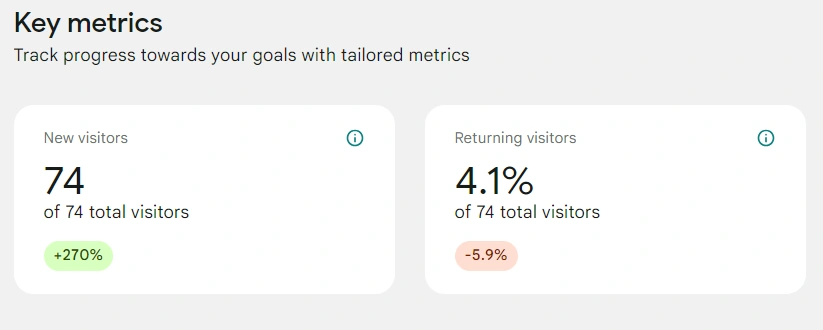
Ensure that the returned visitors are provided with other interesting and quality materials related to their previous sites’ visits.
For first-time audiences, focus on increasing awareness through SEO & Social-Medial. The best way to maintain interaction with both groups and their interest is with updates, promotions, and new content.
Measuring this metric enables organizations to improve the retention of customers as well as the acquisition of the same.
The utilization of a balanced framework ensures sustainable traffic growth in the long-run.
20. USER DEMOGRAPHICS AND INTERESTS
Knowing your users – their age, gender, interests, etc. – assists in adjusting your materials. Google Analytics offers an elaborate report on users, usually contenting age, gender, and even areas of interest.
It means that micro-blogging enables more target-specific and target-oriented material and advertising campaigns.
Understanding your audience’s preferences allows you to boost your interaction rate and sales.
LEVERAGING USER DEMOGRAPHICS AND INTERESTS
And to make good use of it, learn who your targeted users are. They need to generate content that will address the section that they fit into, their interests and their wants.
Market your content according to age, preference or geographical location. Market your products to the target consumers through special products.
The last advice is to review and update the content regularly concerning the changes, which occurred concerning the users’ preferences.
Here, personalized interaction seems to be critically important in order to increase the numbers both of engaged users and of users who return for more.
Last but not least, monitoring and managing your SEO performance metrics is desired. By constating and operationalizing these metrics, attempts at optimizing the results of search engine rankings are made.
Digital marketing metrics are used to steer SEO performance and guarantee sustainability

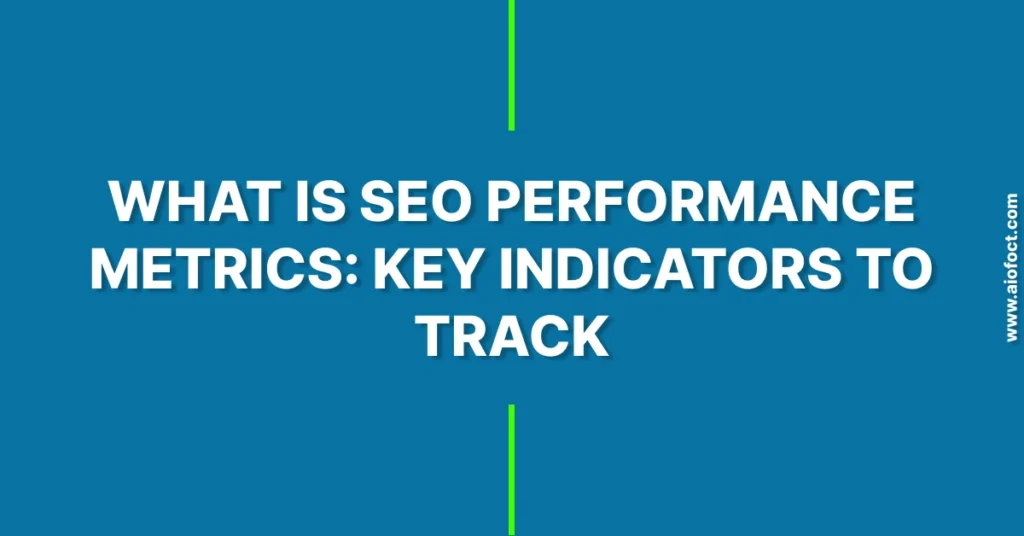
Thanks for the great post on your blog, it really gives me an insight on this topic.~.;-;